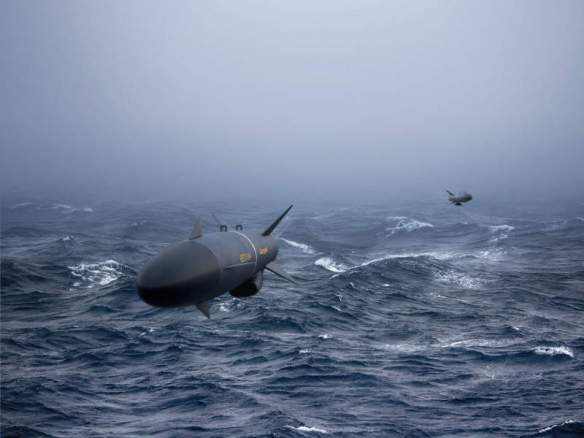Sweden’s re-armament in the face of increasing concern over Russia’s assertive steps against neighbouring countries has extended to re-establishing mobile coastal defence missile systems disbanded after the end of the Cold War. Local press reports suggest that some land-based launch equipment for the potent RBS-15 Mk.3 missile has had to be recovered from museums to get the systems back up-and-running.
The Baltic’s status as part of the new `front line’ between Russia and the rest of Europe has resulted in a new focus on defence that shows no signs of abating. Efforts to strengthen military posture have been particularly evident in Sweden, which has announced it will reintroduce military conscription from 1 January 2018. The measure is aimed at resolving a recruitment shortage and – unlike the previous measure abolished in 2010 – will extend to both men and women. Other significant developments have included the reintroduction of the RBS-15 land-based surface-to-surface missile system, some seven years after the coastal artillery network was abandoned. The missiles have been taken from stocks released from decommissioned surface vessels, whilst some of the launch vehicles have reportedly been recovered from museums. 17 Significant efforts are also being made to extend the lives of existing surface vessels, including a SEK1.2bn (c. US$150m) contract announced on 30 June 2017 for the modernisation of the two Gävle class corvettes. They will join the five Visby class vessels to form a seven-strong force of front-line surface combatants, supported by two older Stockholm class ships acting in a second-line surveillance role. Some of the Koster class MCMVs are also receiving further modernisation, whilst a comprehensive recapitalisation of the submarine fleet was announced in 2015
A new, next-generation version of the SAAB Dynamics RBS 15 ASM was awarded by Swedish Defence Materiel Administration (FMV) in March 2017 to equip the Royal Swedish Navy’s VISBY class corvettes and Air Force’s JAS GRIPEN E multirole fighters. Externally similar to current generation RBS 15, the new missile is reported to be a re-architectured development of the existing RBS 15 Mk.3 anti-ship missile, introducing technology enhancements in the airframe, navigation suite, on-board processing in addition to the RF seeker to improve the all-weather capabilities and develop a significant range enhancement. The latter is reported to have been achieved thanks to a lower weight obtained mainly by composite material use in the airframe design.
The new RBS 15 version for both ship- and airborne applications will be operational from the mid-2020s. Jointly produced and marketed by Saab, Sweden, and Diehl BGT Defence, Germany, the current RBS 15 Mk.3 is in production, under delivery or in service with the Swedish, German, Polish and reportedly Algerian navies. With a range of 250+ km, all-weather and fire-and-forget capabilities, the 4.35-metre-long and 660 kg (flight weight) Mk.3 version is equipped with a high-resolution radar seeker, intelligent processing and a state-of-the-art navigation system with GPS.
